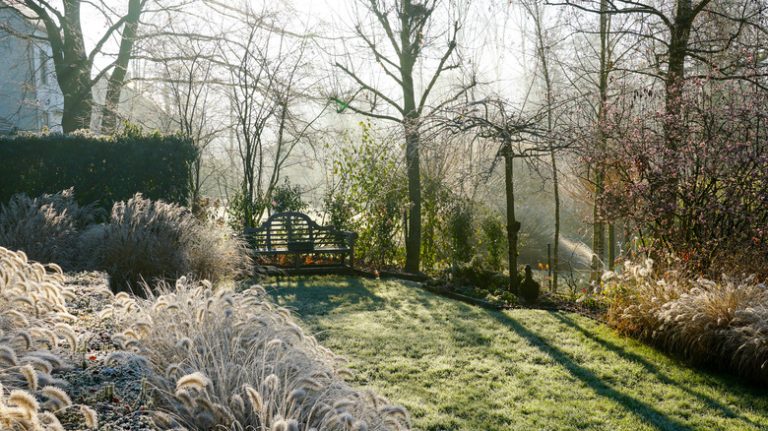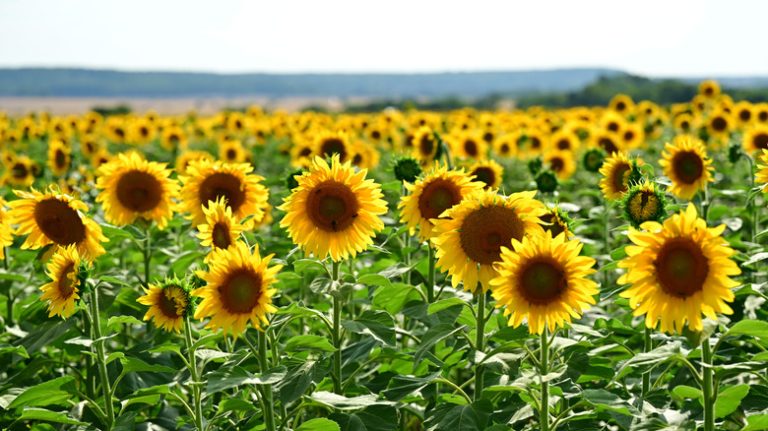Flowers are wonderful to have around. They’re beautiful, and many varieties smell just as lovely. However, if you find yourself sniffling and sneezing around various kinds of greenery, then you might be dealing with an allergic reaction. Indeed, while some flowering plants are totally fine for those with allergies, other flowers can be problematic.
Whether you plan on growing them outside or want to bring them indoors, it’s important to be aware that a fair share of plants create pollen. Very fine grains, they’re meant to make their way from one plant to another in order to germinate and reproduce. This means, though, that pollen can also make its way onto your hands or into the air if you touch or are simply around various flowers. The pollen then causes some people to sneeze, become stuffed up, or have itchy, red, watery eyes. If this sounds familiar, it’s likely because you or someone you know has allergies.
Around 25% of adults in the United States deal with seasonal allergies, according to data from the 2024 National Health Interview Survey (via the Centers for Disease Control and Prevention). These seasonal allergies are often caused by flowers as they grow and bloom. That’s why, if you want to make your home more allergy-friendly both inside and out, you’ll need to know which flowers are the best and worst for dealing with this immune-system reaction.
Best: Begonia
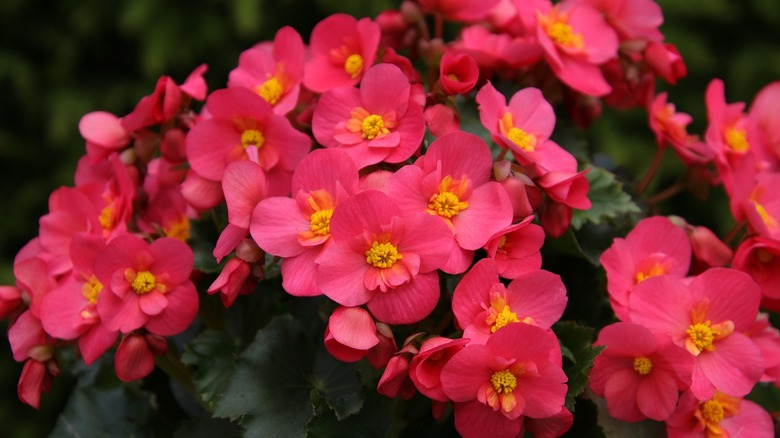
Pixabay
Begonias are the kind of plant that can grow in a range of areas and conditions while also thriving even if you’re not able to give it a lot of TLC. While the section of the plant that’s found beneath the dirt can be dangerous to animals, the flowers only let off a little pollen, making them allergy-friendly.
Best: Daffodil
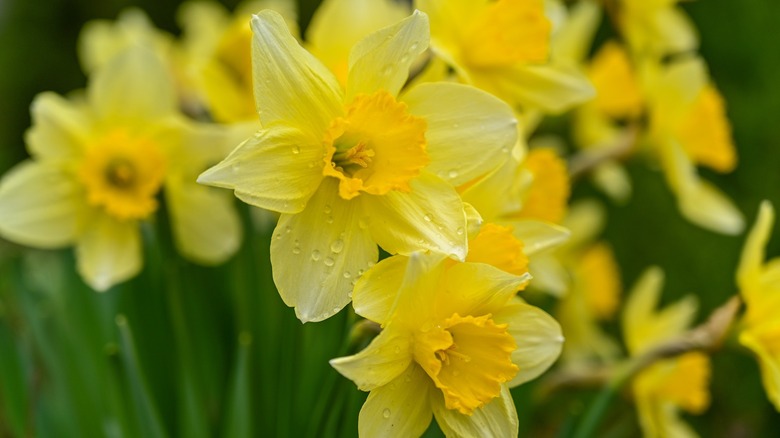
Pixabay
Daffodils (Narcissus) only produce a small amount of pollen and the grains tend to be carried off by bugs. That means they don’t end up in the air where they can bother you. However, it’s best to keep your hands off these flowers as touching them can cause hives as well as allergic contact dermatitis and irritant contact dermatitis.
Best: Iris
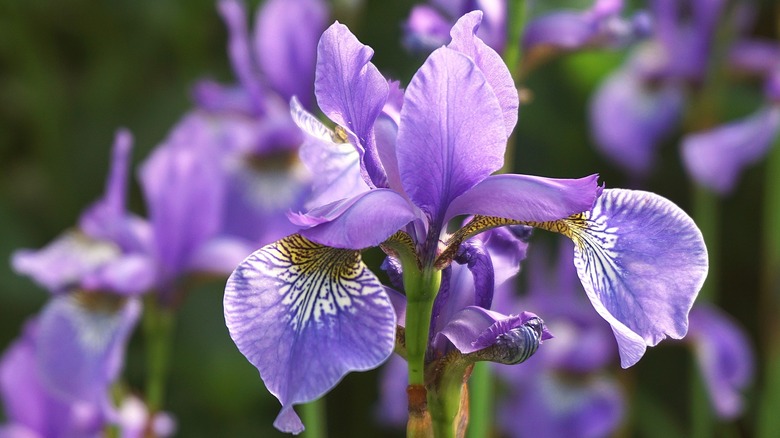
Pixabay
A stunning flower that may charm you with both its fabulous color and stunning shape, you might also appreciate that irises manage to germinate without producing a lot of allergy-sparking pollen. On top of that, any of the powdery substance that does manage to fall is often caught by the flower’s flowing petals.
Best: Pansy
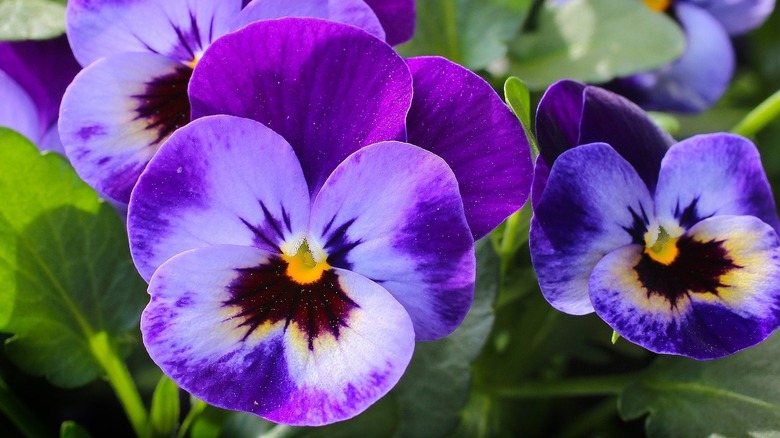
Pixabay
Pansies (Viola × wittrockiana) are a popular flower thanks to the fact they grow in plenty of pretty colors with some even boasting impressive patterns. They’re also an option that those with allergies may like to have around since they’re another flower that creates just a touch of pollen which is then collected by industrious insects.
Best: Geranium
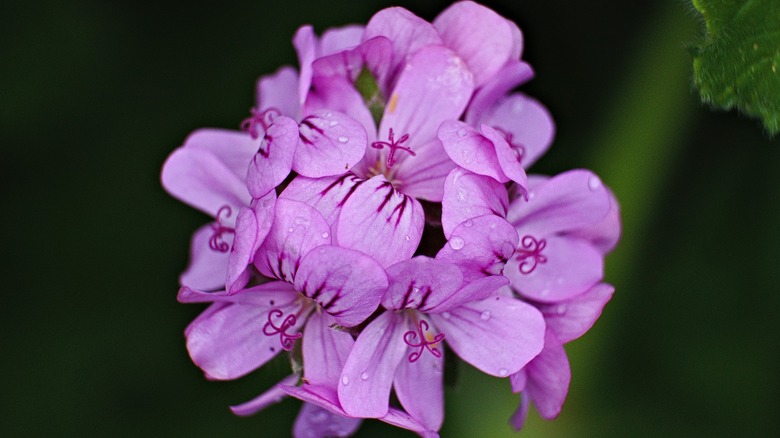
Pixabay
Some varieties of geranium rely on very little pollen while others don’t produce any pollen at all. Obviously, both kinds are ideal options for anyone who wants to avoid allergic reactions. At the same time, be sure to stay away from the leaves if you don’t want them to bother your sensitive skin.
Best: Tulip
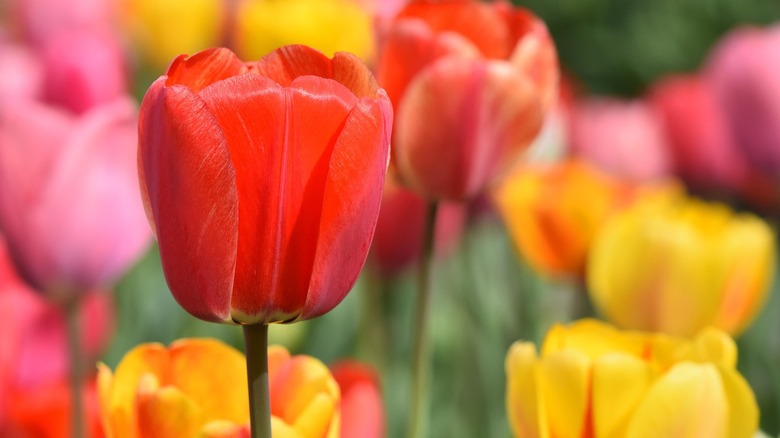
Pixabay
Just like the other flowers in this list of best flowers for allergies, tulips (Tulipa) forgo tons of pollen, which means that you can have them around without sneezing up a storm. However, be careful not to touch them (or the bulbs) too much as they can lead to an unpleasant reaction known as tulip fingers, tulip nail, and tulip itch.
Best: Crocus
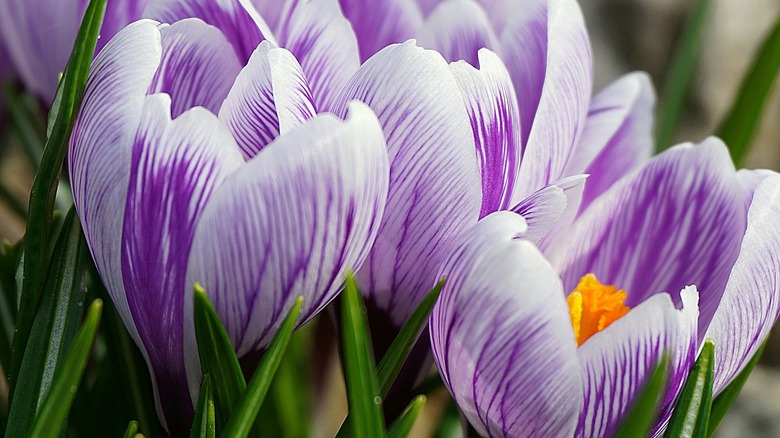
Pixabay
Crocuses tend to thrill those who spot them by appearing at the end of winter and signaling that spring is on its way. The flowers may also delight you with the fact that they produce just a hint of pollen, which you likely won’t be able to detect and certainly won’t set off your allergies.
Best: Petunia
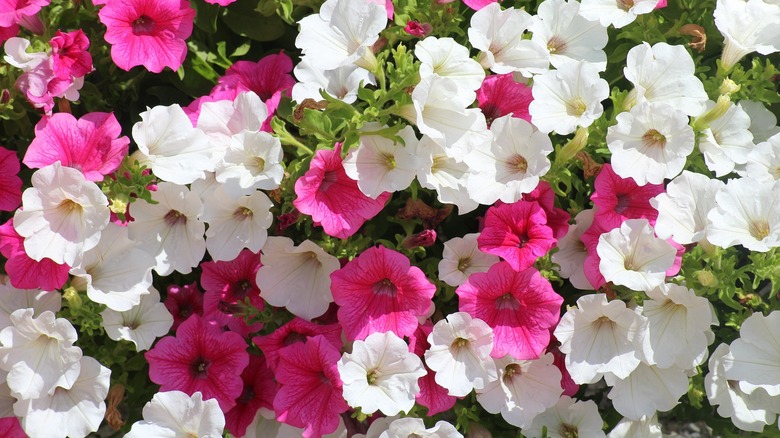
Pixabay
Petunias are classic flowers, which means that you might see them planted in plenty of places around your neighborhood. The good news is the pervasiveness of the pretty plant doesn’t have to worry allergy-sufferers. While petunias do create pollen, it doesn’t qualify as an allergen, which means these plants should be safe to have around.
Best: Roses
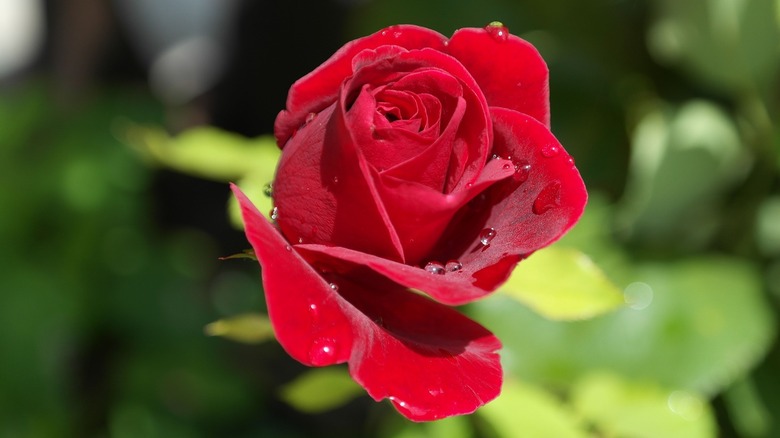
Pixabay
Roses (Rosa) aren’t only a flower that sticks to an extremely small amount of pollen, but the grains they do produce are heavier than other varieties of the dusty substance. Because of this, the pollen isn’t able to make its way into the air and, in turn, won’t fire up your allergies.
Best: Lily
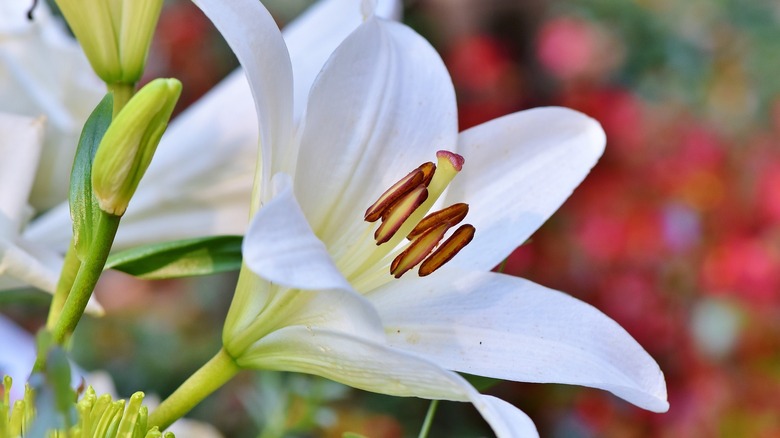
Pixabay
Although you might be concerned that the center of a lily (Lilium) contains the pollen you need to be wary of, you simply need to look at the flower to see that’s not the case. Instead, this is another flower that’s completely free of pollen and totally safe for those with allergies.
Worst: Chrysanthemums
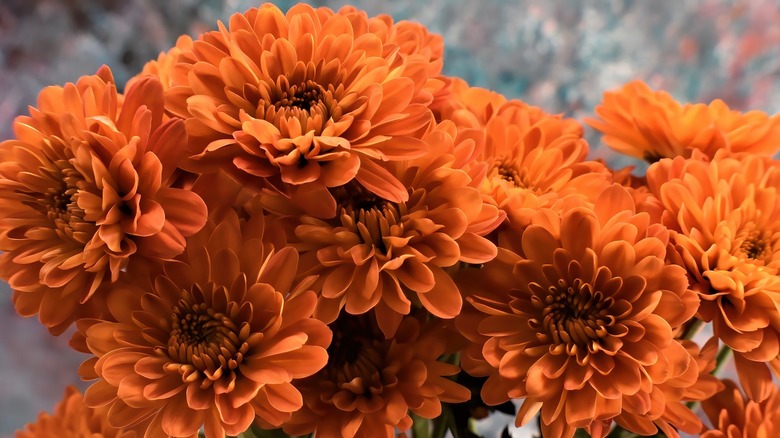
Pixabay
Unfortunately, for allergy-sufferers who love chrysanthemums, they not only contain pollen but also produce other kinds of allergens, which can all get into your air. If you can’t stand the thought of not having these flowers around, though, then make sure to remove all traces of the plants from inside your home and keep them at a distance outside.
Worst: Daisies
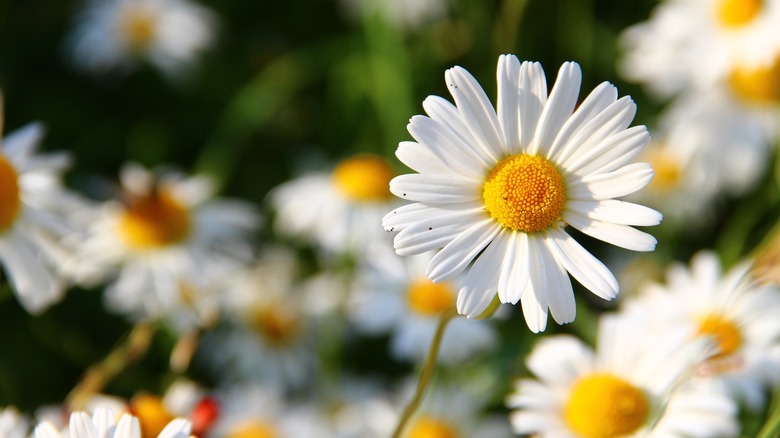
Pixabay
Daisies (Bellis perennis) are undoubtedly delightful to look at, however, that’s probably all you should do with them if you deal with allergies. You may not only face a reaction if you touch the flower, but the ample amount of pollen they produce can also spark allergies while staying on the plant and without even entering the air.
Worst: Sunflowers
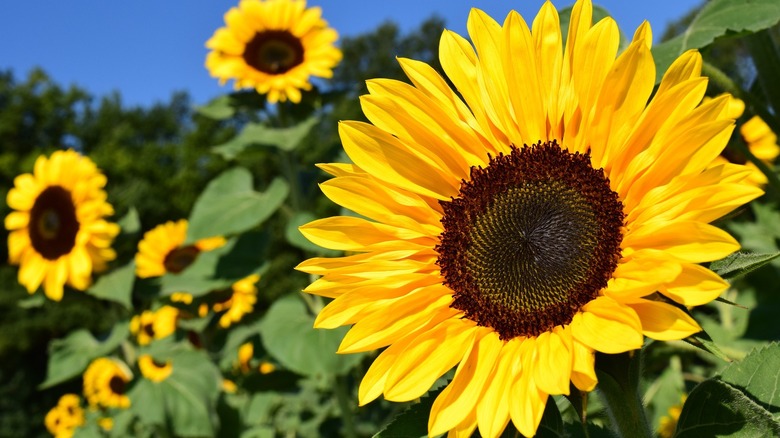
Pixabay
Due to the size of sunflowers (Helianthus), it’s surely not hard to believe that they contain a lot of pollen that can make its way around with the help of the wind. If you want to avoid allergies but still want sunflowers in your garden, then stick with Apricot Twist and Joker varieties which have heavier less problematic pollen.
Worst: Baby’s breath
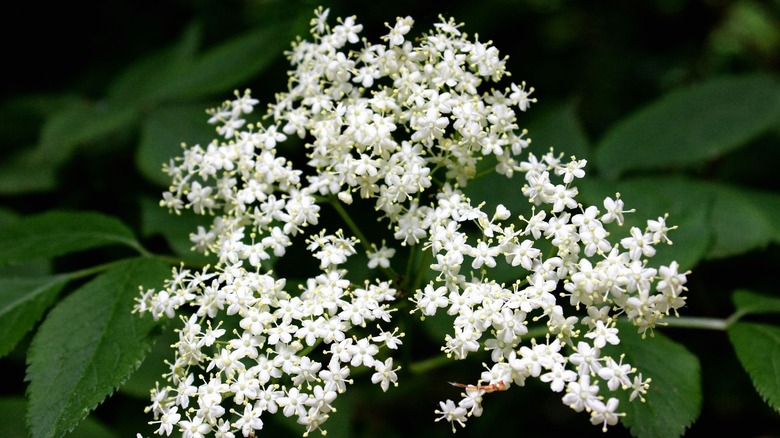
Pixabay
Baby’s breath (Gypsophila) may have an adorable name and looks just as sweet, however, the allergic reactions these tiny flowers can cause aren’t cute at all. While blooms that are dry can cause issues for your eyes and nose, the sap can also make your skin break out in an itchy rash.
Worst: English lavender
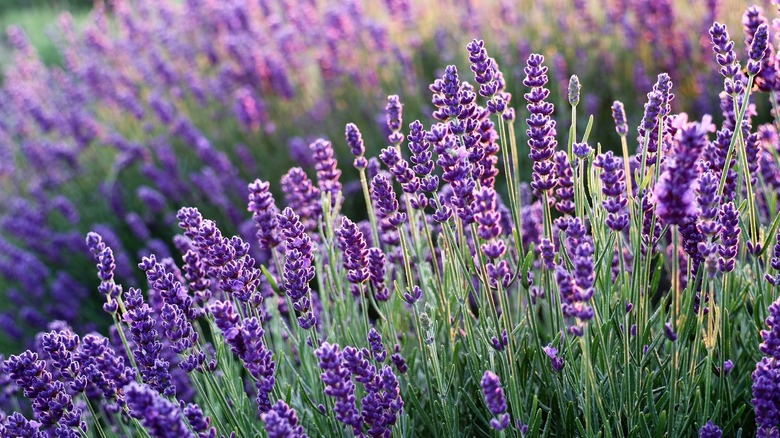
Pixabay
English lavender (Lavandula angustifolia) is beloved for both its color and its scent. That is unless you have allergies. In that case, there are two possible origins of your issue. Growing in groups and producing pollen and odors that are carried by the wind, both can make their way to you and trigger allergies.
Worst: Aster
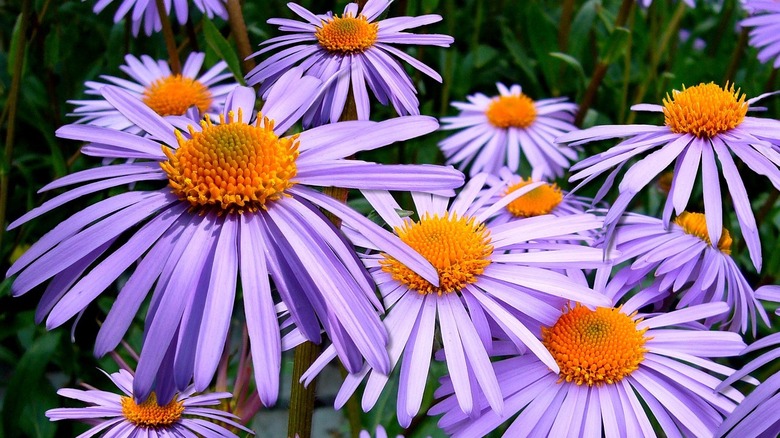
Pixabay
The source of many allergy-sufferers’ seasonal woes, the pollen from aster plants is so potent that it can cause a reaction before it even hits the air. Responsible for everything from sneezing and coughing to both irritated skin and eyes, these flowers often bloom in late spring, which is later than many other plants.
Worst: Marigolds
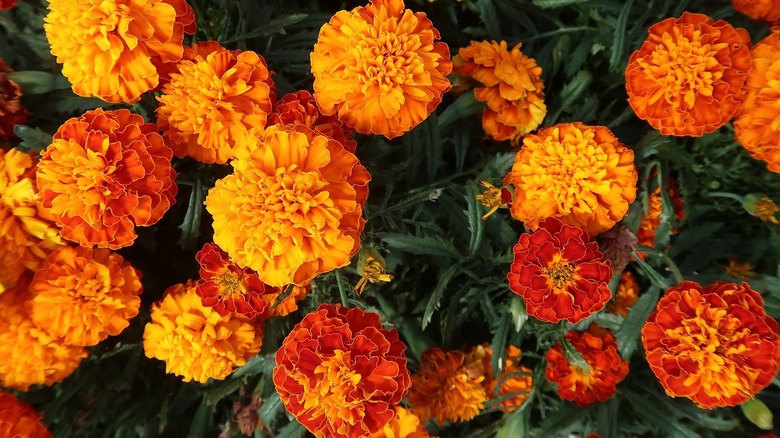
Pixabay
Marigolds (Tagetes) are another flower that blooms a little later in the year and tend to do so at the end of spring right up until fall. This is when they create a seemingly excessive amount of pollen and, therefore, allergic reactions. The scent of marigolds can also pose a problem for anyone with asthma or odor sensitivities.
Worst: Dahlia
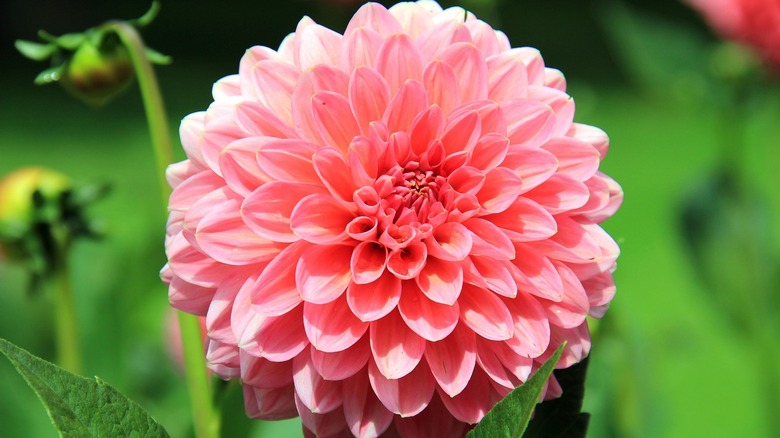
Pixabay
Dahlias won’t only take a prominent place in your home or garden thanks to their stunning blooms, but the flowers can also cause a strong allergic reaction. Able to provoke issues right through the summer months, the pollen from these plants is so potent, you might want to leave the flowers outside.
Worst: Amaranth
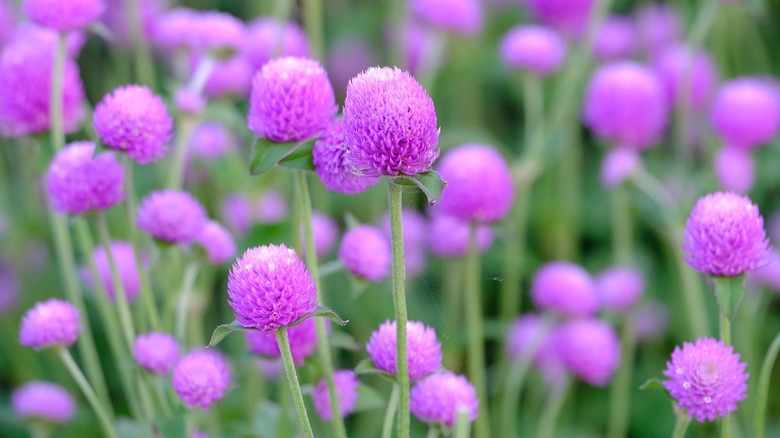
Pixabay
If you haven’t heard of amaranth (Amaranthus), that might be because it’s also known as pigweed. Despite the latter name, which is arguably unfortunate and not at all appealing, the plant’s round purple flowers can be beautiful. Granted, they can also be the cause of allergy symptoms like runny nose, sneezing, coughing, irritated eyes, a headache, and a rash.
Worst: Chamomile
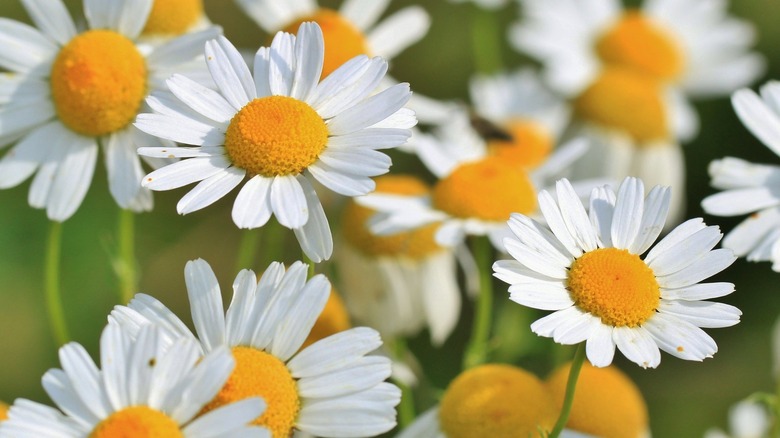
Pixabay
Some people benefit from drinking tea and using skin care products that rely on chamomile (Matricaria chamomilla). Unfortunately, the flowers of this same plant may be the source of the seasonal allergies you experience during spring. In fact, the chamomile plant is related to ragweed, which is notorious for causing allergy-related nastiness.


